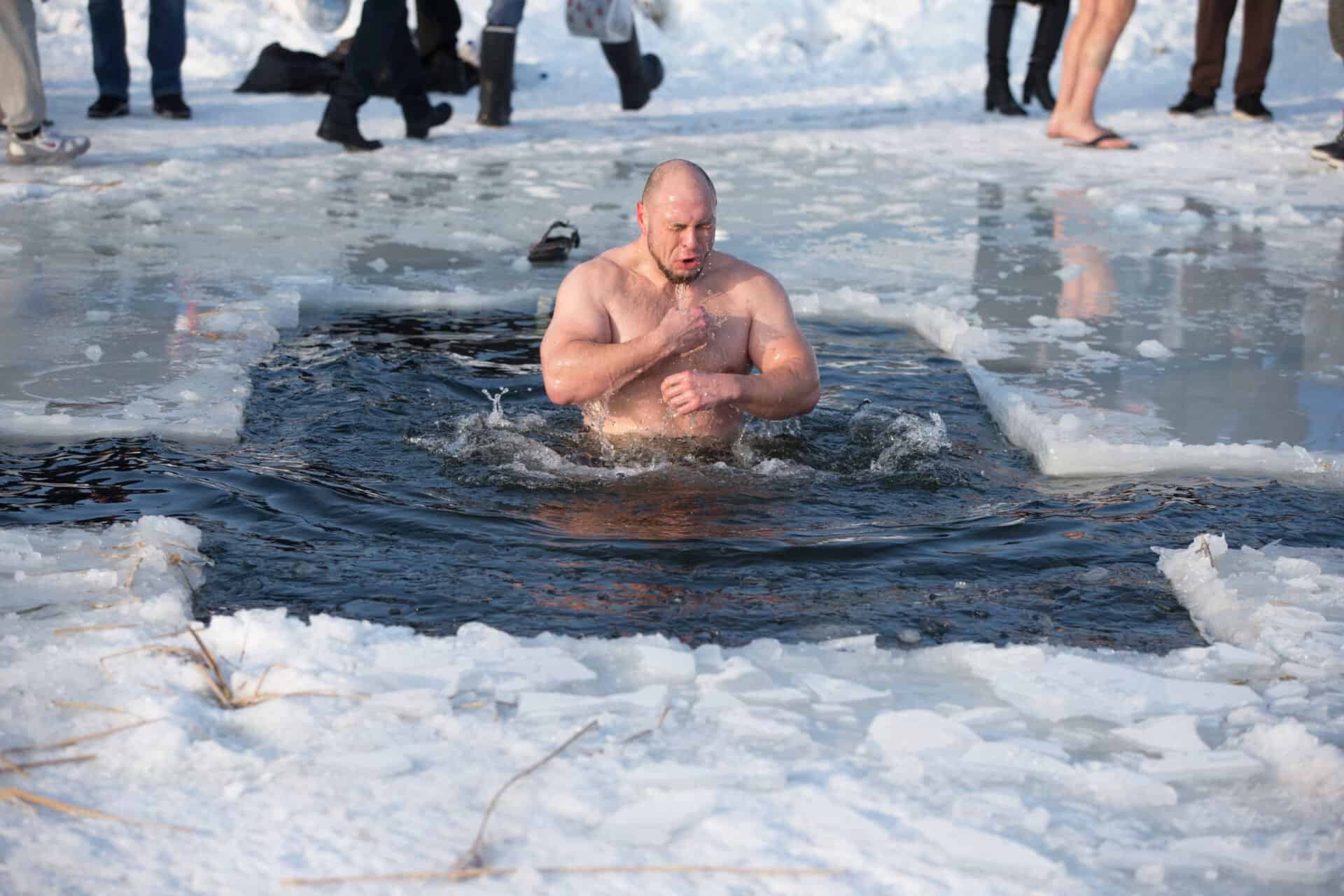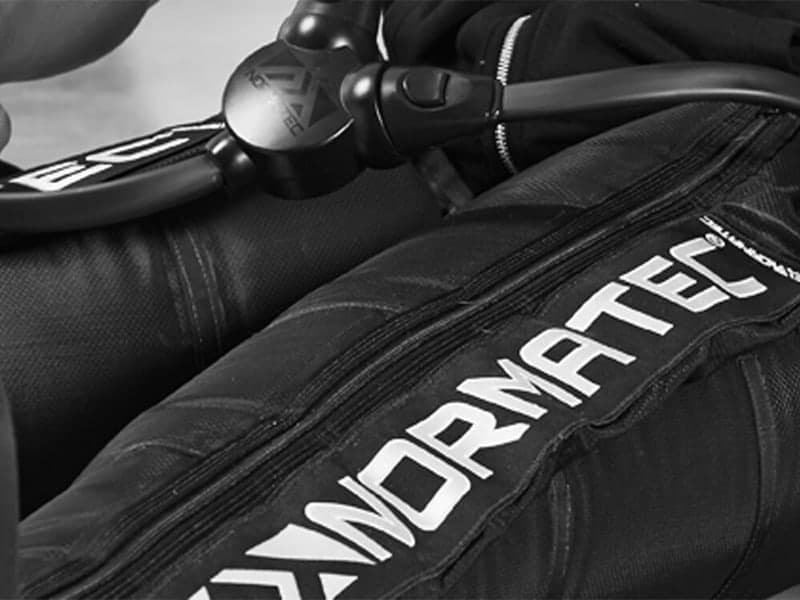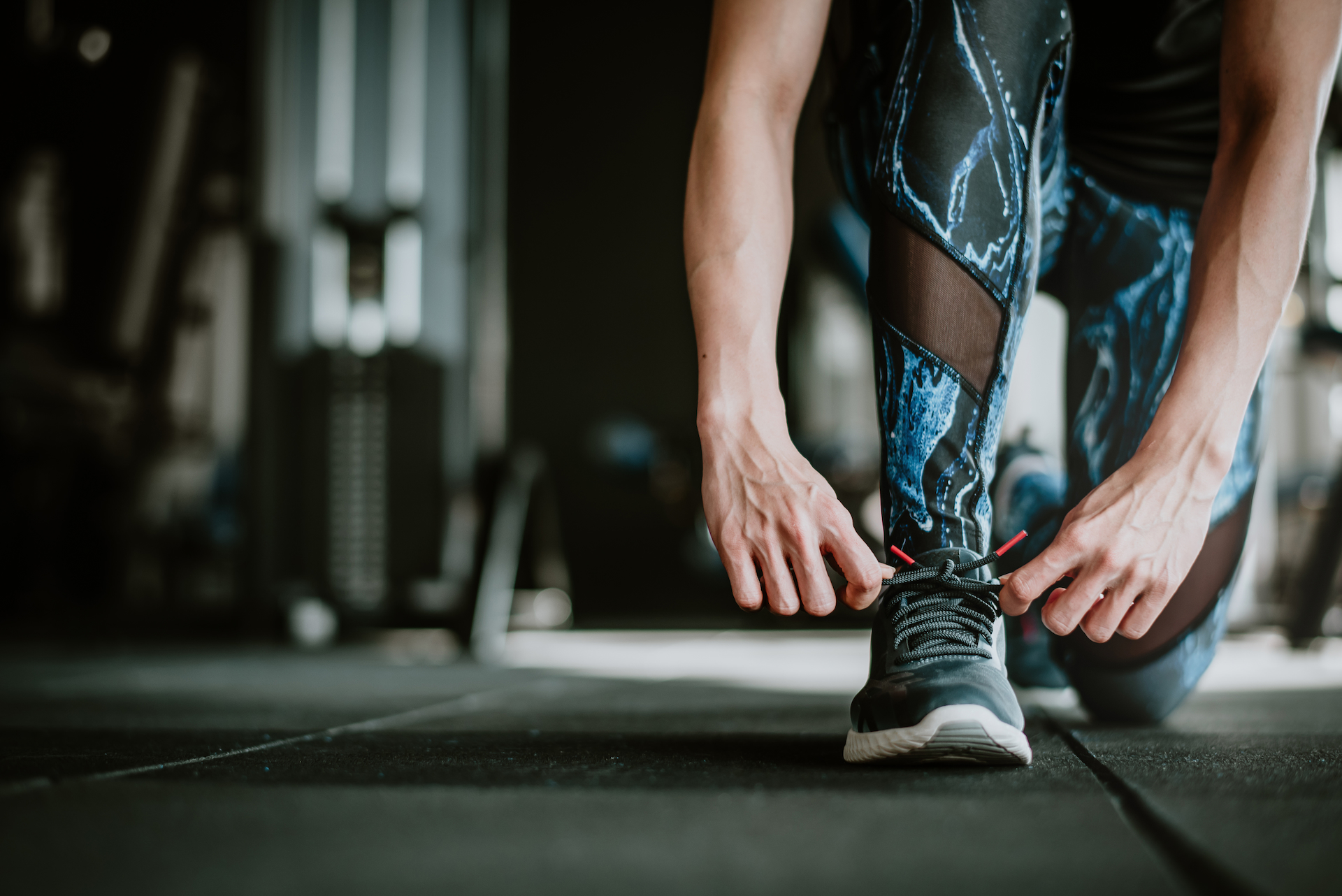For some time now, cold therapy has been trending as an incredible method of recovery, providing numerous health and wellness benefits. Cold therapy is becoming more and more popular among athletes, with many incorporating it into their daily routine, be it first thing in the morning, or post workout.
The question is, which type of cold therapy is best? Should you be taking a cold plunge? Or is whole body cryotherapy more beneficial? In this article we’ll be providing a brief comparison on the differences between cryotherapy and ice bath.
What is Whole Body Cryotherapy?
Whole-Body Cryotherapy involves standing in a “Cryotherapy Chamber” for anywhere between one to three minutes. During this time, the body will be exposed to extremely cold air (liquid nitrogen) in the range of -110°C to -170°C.
This sounds horrific, right? It’s surprisingly more comfortable than it sounds and significantly more pleasant than being exposed to icy water or other cold therapies for the same duration.
In the context of athletes, Whole Body Cryotherapy (WBC) has been hailed as the most effective variant of cold therapy for promoting muscle recovery. It achieves this by accelerating the repair process of muscles, thereby leading to a decrease in soreness and muscle pain.
Cryotherapy is non-invasive and aims to provide fast and effective results with no downtime involved. It is heavily endorsed by athletes and is trending as the ultimate recovery experience.
What are the benefits of Cryotherapy?
Through the process of subjecting the body to cold temperatures and thereby causing the constriction of blood vessels, Cryotherapy offers potential advantages for recovery. This includes the acceleration of muscle repair and the mitigation of Delayed Onset Muscle Soreness (DOMS). The cold exposure prompts blood to gather around internal organs, leading to potential relief for muscles and muscle tissues through the reduction of swelling and inflammation. Furthermore, this process aids in eliminating toxins and waste materials, including lactic acid, from the outer layers of tissue.
Upon the body’s return to room temperature, there is a notable surge in blood flow. This influx of fresh, revitalised blood to the skin, muscles, and tissues holds the potential to bring rapid repair and healing.
Post cryotherapy session, the body will be working hard to try and regulate core temperature. This metabolic adaptation has been shown in studies to burn up to 800 calories in the 24-hour period following a cryotherapy session.
Whole body cryotherapy has also been proven to provide a range of skin and mental health benefits, including the ability to enter a deeper level of sleep, and a mood boost through endorphin release during the session.
What is an Ice Bath?
Ice baths come in many shapes and sizes. Some people or facilities may use bathtubs, barrels, freezers, or other large water containing devices to provide the therapy. Cold plunge pools are also essentially the same thing.
Different methods may be adapted to regulate the temperature of the pool/bath, including refrigeration technologies, ice cubes or just the ambient outside temperate in cold climates. Typically, ice baths are effective in the range of 5-10°C. Any colder and the water becomes too icy.
When you submerge into an ice bath, your sympathetic nervous system triggers an emergency alarm, which makes you want to immediately get out. This is because the brain thinks you are in a life-threatening situation. By calming your breathing and taking slow deep breathes, you can convince your brain that you are in fact safe. This aids in building mental resilience and many enjoy the challenge of being uncomfortable.
Most people tend to ice bath for between 2 and 10 minutes. If you start shivering, it’s time to get out!
What are the benefits of an ice bath?
As previously mentioned, ice baths are fantastic for building mental resilience. This mental challenge, alongside a release of endorphins can significantly improve your mood and help you to manage stress. The initial cold shock of entering an ice bath also causes a release of RNA/DNA proteins. Studies on mice have shown that these proteins can prevent or treat neurological diseases, such as Alzheimer’s or dementia.
From a physical perspective, an ice bath works in much the same way as whole body cryotherapy. The body detects the risk of hypothermia causing vaso-constriction. When you exit the ice bath, increased blood flow streams back to the outer extremities. This makes ice baths an excellent means to improve recovery, reduce inflammation and alleviate pain.
Celebrities and athletes such as Joe Rogan and Georges St-Pierre make Ice Baths a staple of their training and recovery routine.
Why is cold therapy good for you?
Cold therapy offers several potential benefits for the body. Some of the reasons cold therapy is considered good for you include:
- Reduced Inflammation: Exposure to cold temperatures can help decrease inflammation by constricting blood vessels and reducing blood flow to the affected area. This can be beneficial for alleviating pain, swelling, and discomfort associated with injuries or inflammatory conditions.
- Pain Relief: Cold therapy can numb nerve endings, leading to temporary pain relief. It’s often used to manage pain caused by acute injuries, such as sprains, strains, and bruises.
- Muscle Recovery: Cold therapy is commonly used by athletes to aid in muscle recovery. It can help reduce muscle soreness, prevent muscle damage, and accelerate the repair of micro-tears in muscle fibres caused by intense physical activity.
- Improved Circulation: Cold exposure followed by rewarming can stimulate blood circulation. The constriction and subsequent dilation of blood vessels can enhance blood flow and nutrient delivery to various tissues, promoting healing and overall tissue health.
- Enhanced Mood and Energy: Cold exposure can trigger the release of endorphins and other “feel-good” hormones, leading to improved mood and increased energy levels.
- Boosted Metabolism: Cold exposure can temporarily increase metabolic rate as the body works to generate heat to counteract the cold. This can potentially contribute to weight management/calorie burn.
- Skin Health: Cold therapy can improve skin complexion and texture by promoting blood flow to the skin’s surface and aiding in the removal of toxins and waste products. Cryotherapy can also stimulate collagen production.
- Reduction in Swelling: Cold therapy helps to constrict blood vessels, which can reduce fluid build-up and swelling in injured areas.
- Enhanced Immune Function: Some research suggests that exposure to cold temperatures may stimulate the production of immune cells and improve immune system function.
What are the main differences between cryotherapy vs ice bath?
Whole Body Cryotherapy uses dry air, which gradually cools, eliminating the shock of plunging into an ice bath. The lack of humidity prevents frostbite and makes the air feel warmer than it is.
There is also no risk of hypothermia as the bodies core temperature remains warm, despite the extremely cold temperature. Ice baths carry the risk of hypothermia, but only when you stay in longer than you should. As whole body cryotherapy is supervised, this cannot be allowed to happen, whereas many ice bath from home with nobody there to regulate time.
Due to the difference in the speed of the temperature change between the two treatments, Cryotherapy can be considered the more comfortable of the two treatments. For some though, the discomfort of the ice bath is one of the best bits! It builds mental strength.
Ice bath is a slower process, and you can hop in and out. This provides a better opportunity to enjoy Contrast Therapy, which is the process of jumping between rapid heating and rapid cooling. You can experience this in the Body for Life Recovery Room, where you can frequently and freely move between the group sauna and the ice baths. Whole Body Cryotherapy on the other hand isn’t so much of a stop-start process.
So which is better? Whole body cryotherapy or the ice bath?
Whole body cryotherapy is certainly more comfortable. The recovery from the treatment is near instant, whereas ice baths may take a bit longer to get blood pumping again. Whole Body Cryotherapy is also more convenient as you don’t get wet and can be in and out within just 3 minutes!
As for physical benefits, both are heavily researched, but there aren’t many studies out there that come to a solid conclusion that one may be more effective than the other. Both treatments provide a huge variety of health and recovery benefits, with the level of comfort and mental resilience required being the separating factors.
At Body for Life, we believe you should try both options to see what works best for you and your personal recovery and health journey. We have Whole Body Cryotherapy, Localised Cryotherapy, and a Recovery Room with Ice Baths all on site.
We found this comparison video by The Vegan Cyclist to be very a informative opinion from an athletes perspective.
Cryotherapy vs Ice bath cost
A cryo chamber is a very large and specialised piece of equipment. It requires expert maintenance, operation, and supervision. An ice bath on the other hand is simply, a big pool of very cold water. Many people run their own ice baths, whereas having a cryo chamber at home is a little ambitious.
To get your ice bath down to proper temperature, around 5-10°C, depending on the season, you will need upwards of 4 bags of ice. You may get a few sessions out of this in the winter, but in our warm Aussie climate, this will need constant topping up. You will need to factor in the cost of the bath, water plus ice. You will also need to regularly clean and empty the bath.
On the other hand, Body for Life offers Whole Body Cryotherapy sessions from just $49.00, or even cheaper if you buy a package. It is also well worth checking out the Recovery Memberships to lock in even more savings if chilling is a regular part of your routine.
If ice baths are more your thing, check out the Recovery Room and our Recovery Room Memberships. here you can enjoy our on-site ice baths and include some Contrast Therapy by jumping in the Sauna as part of the package.
If you have any questions about cryo, ice baths or contrast therapy, we’re here and happy to help!
References
https://michaelkummer.com/health/ice-bath-vs-cryotherapy/#7-pros-and-cons-of-using-cryotherapy
https://runnersconnect.net/running-questions/cryotherapy-vs-ice-baths/
https://simplifaster.com/articles/new-evidence-ice-cryotherapy-sport/
https://www.port.ac.uk/news-events-and-blogs/news/cryotherapy-versus-ice-baths-its-a-draw








